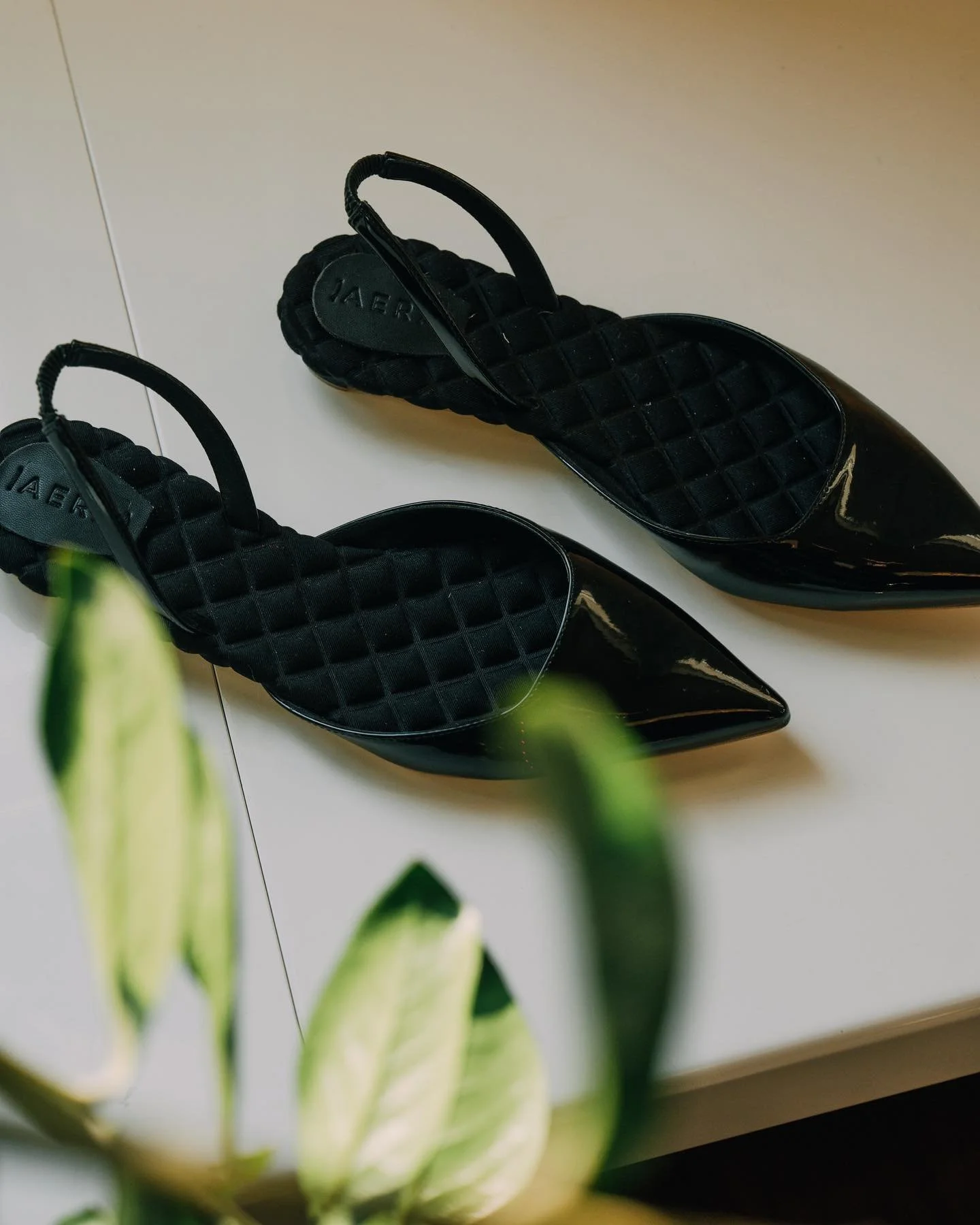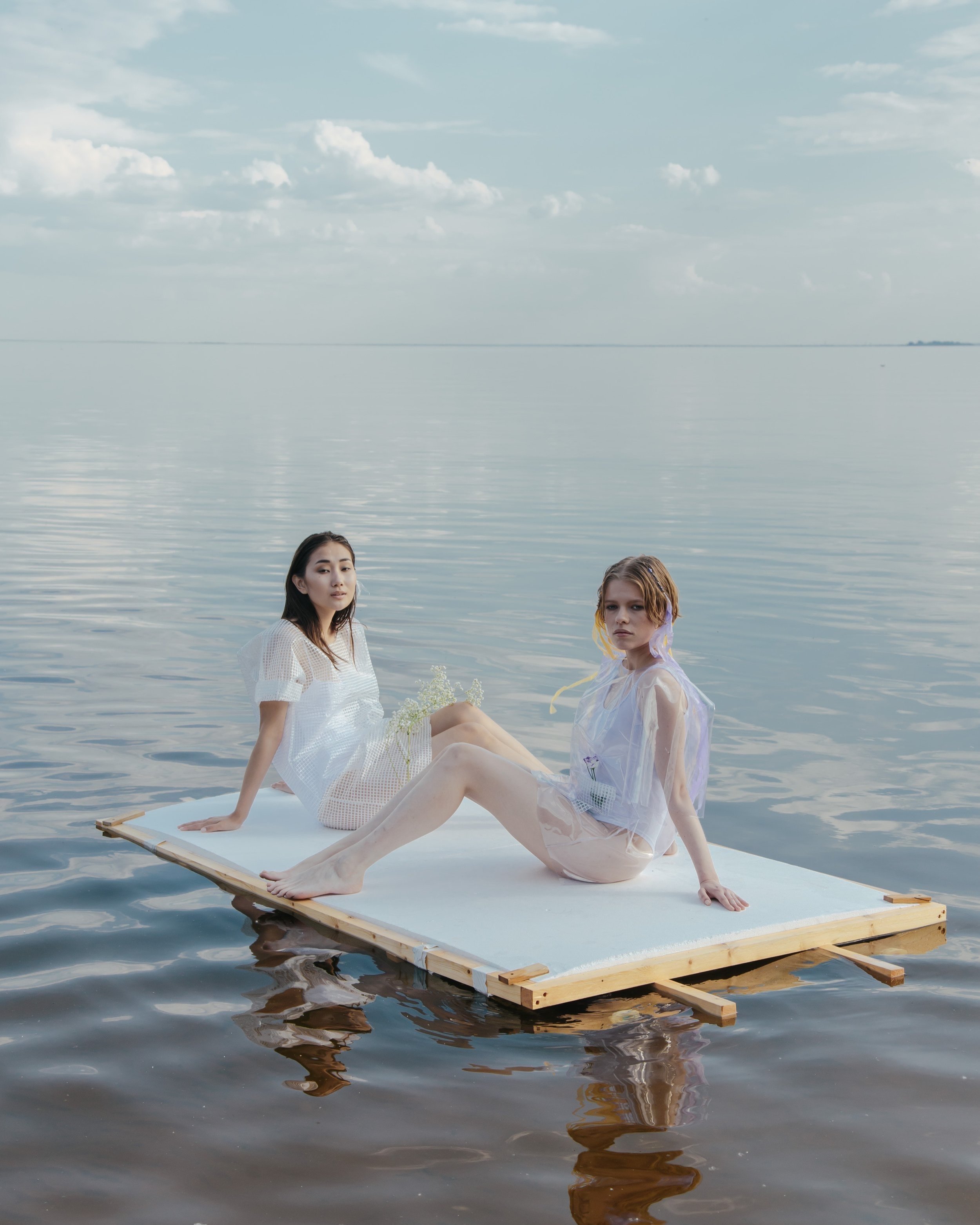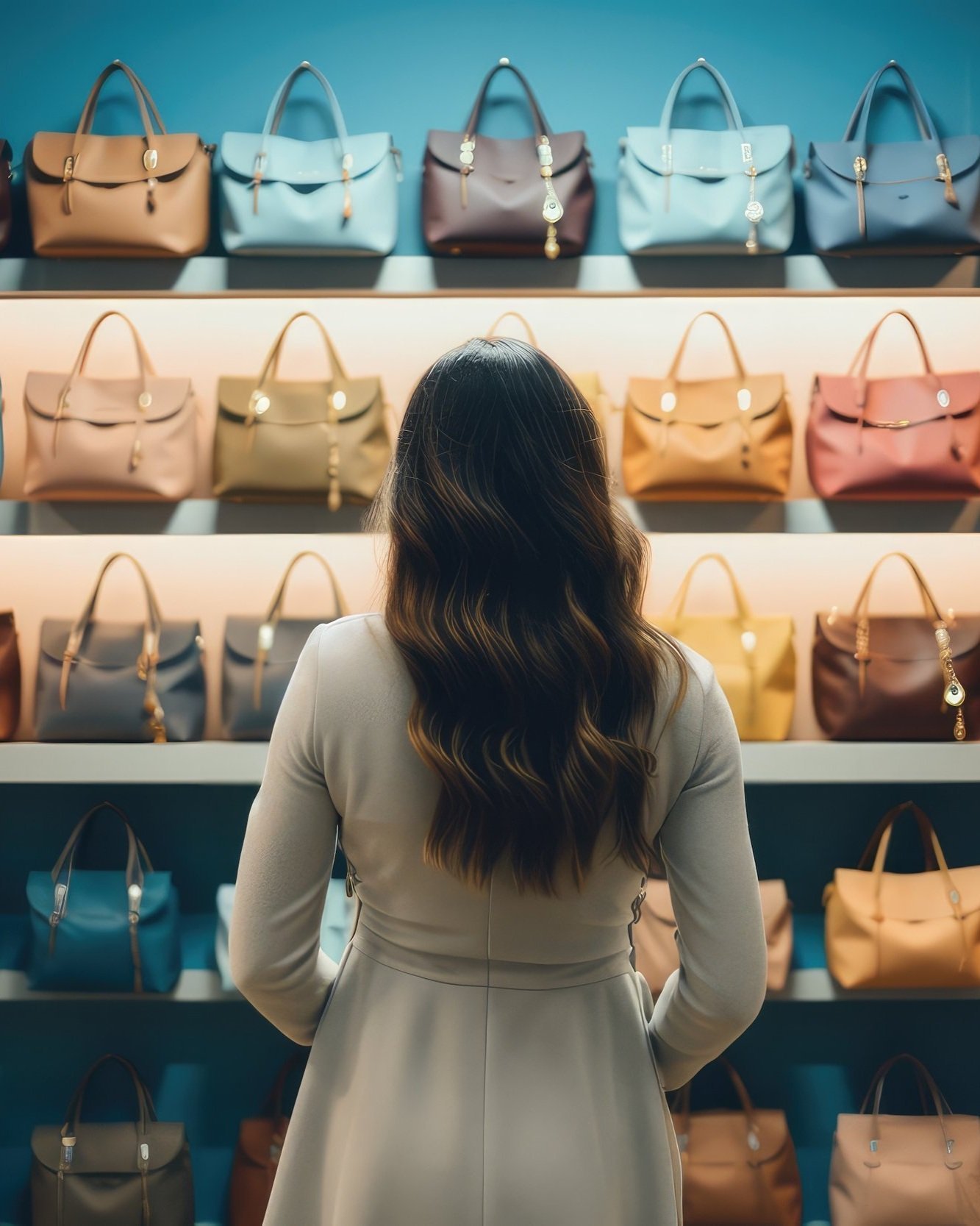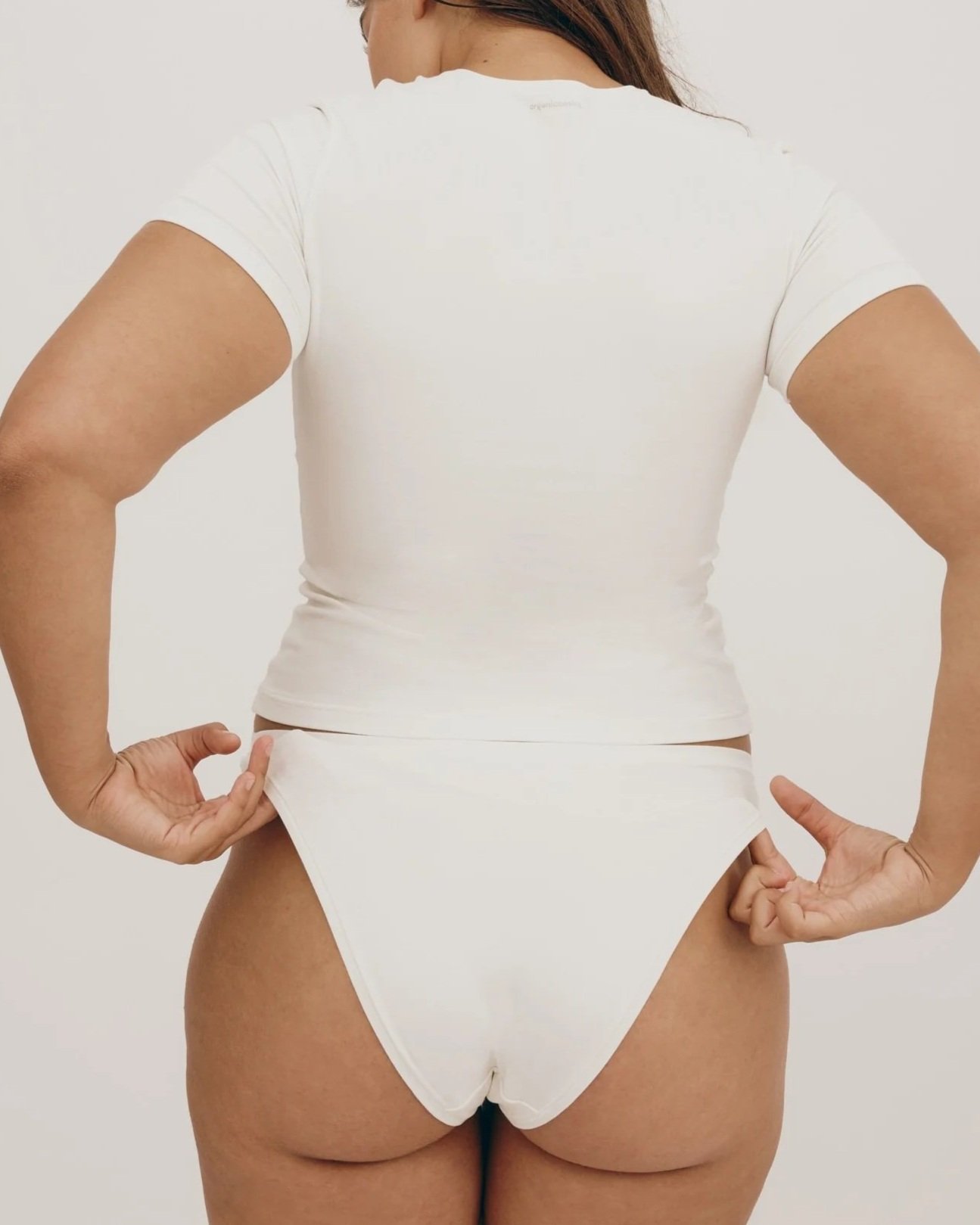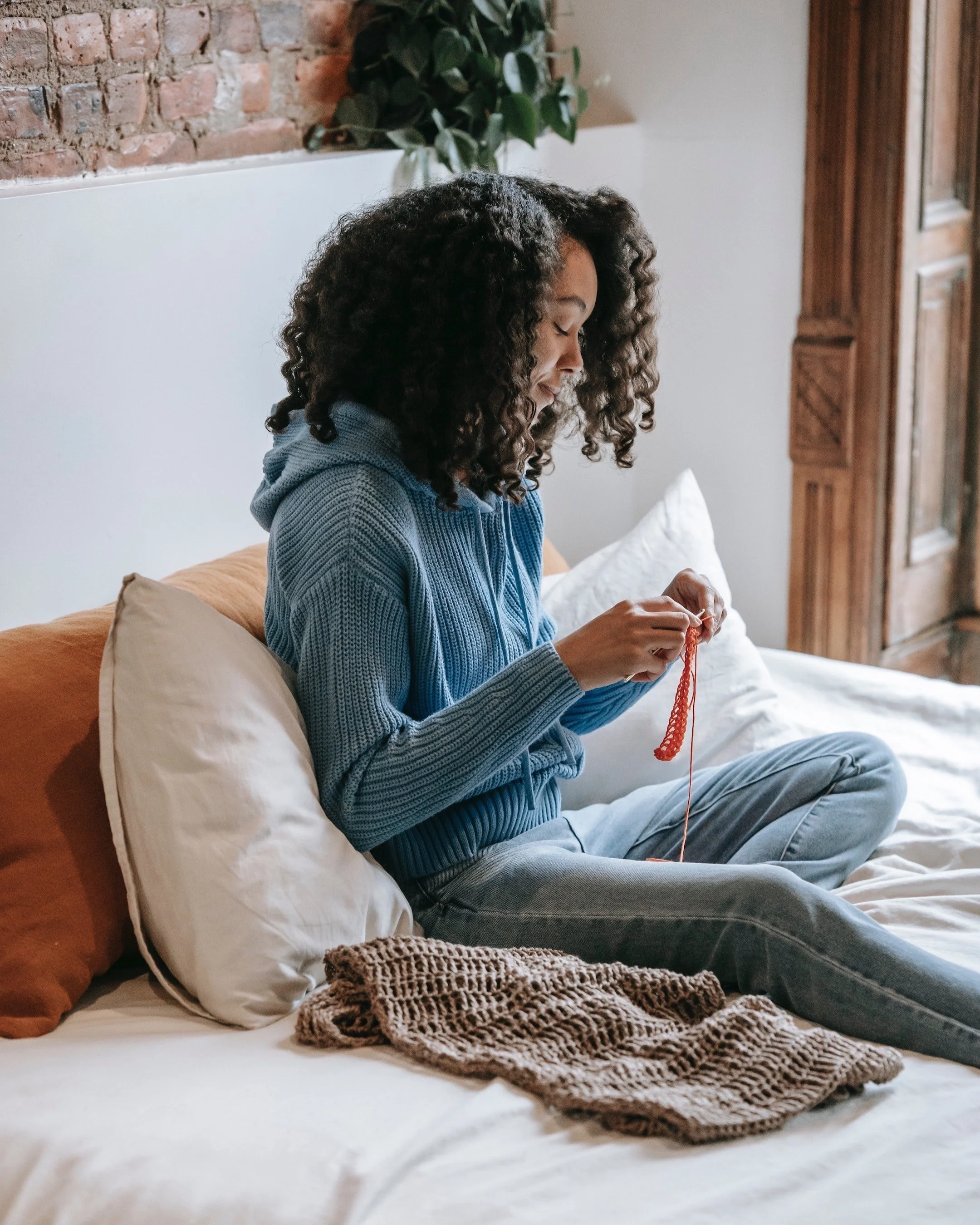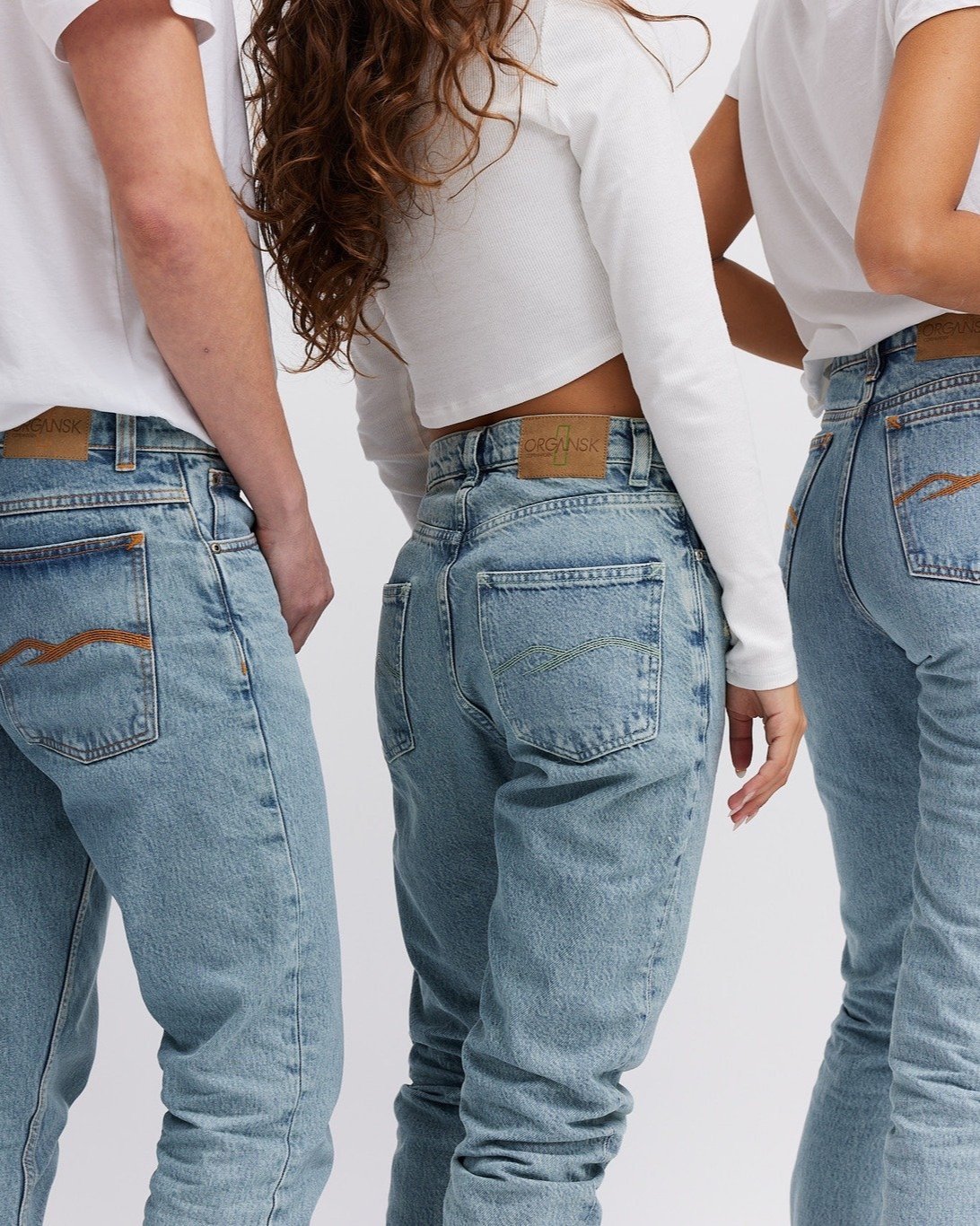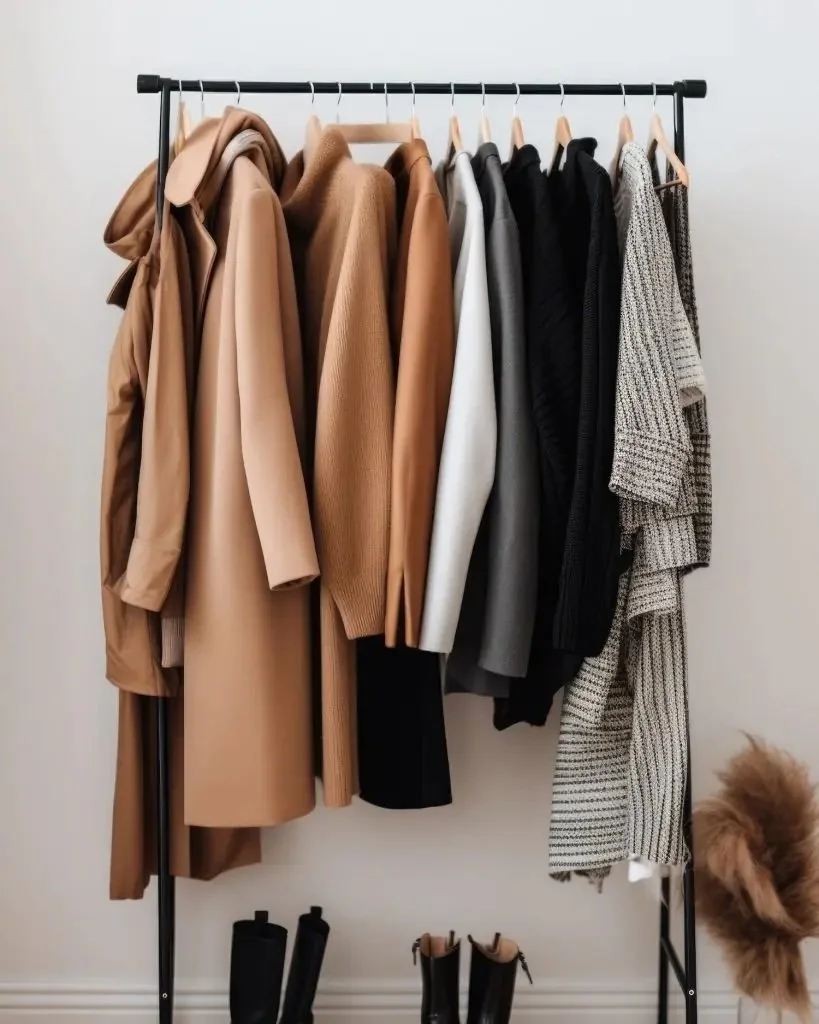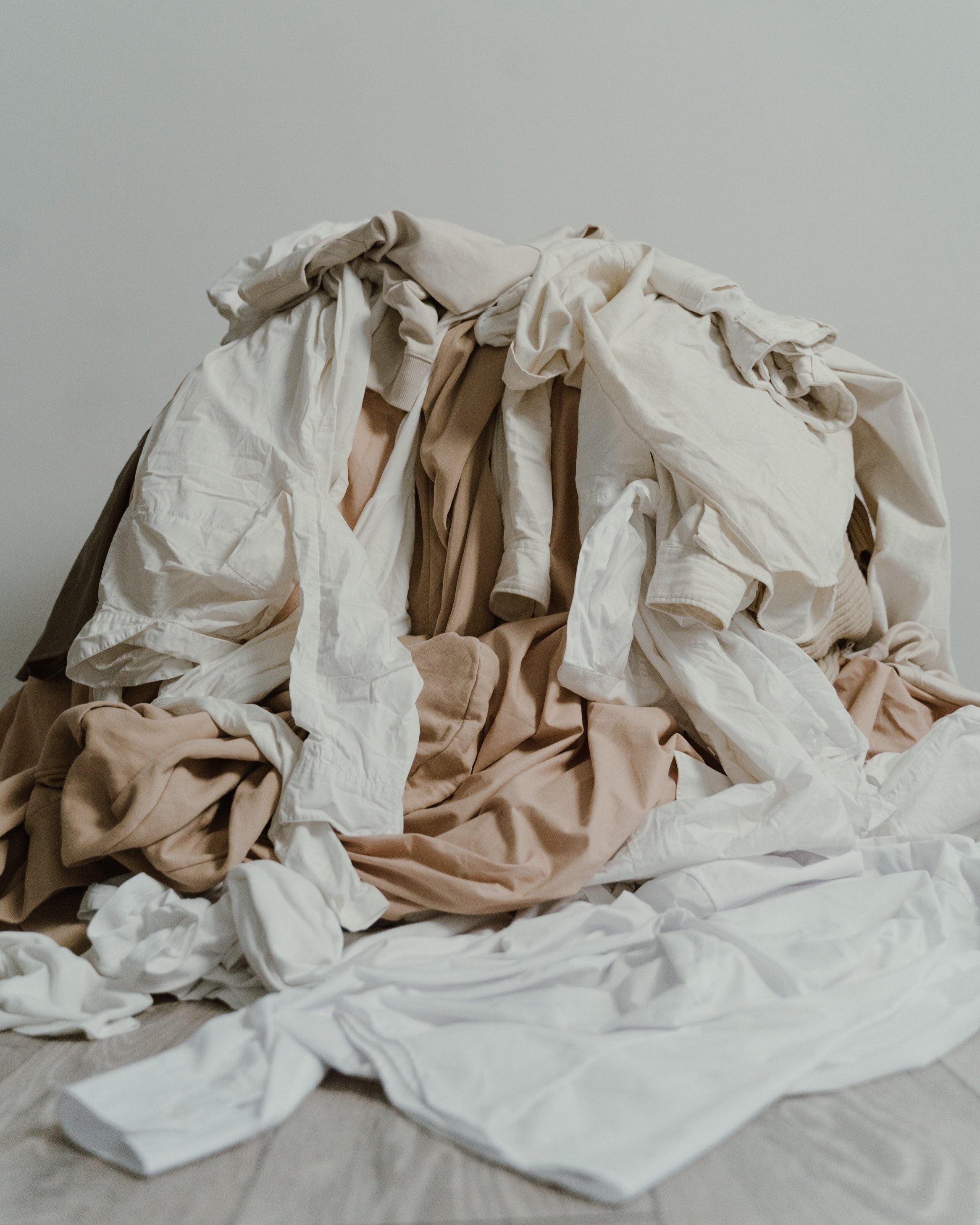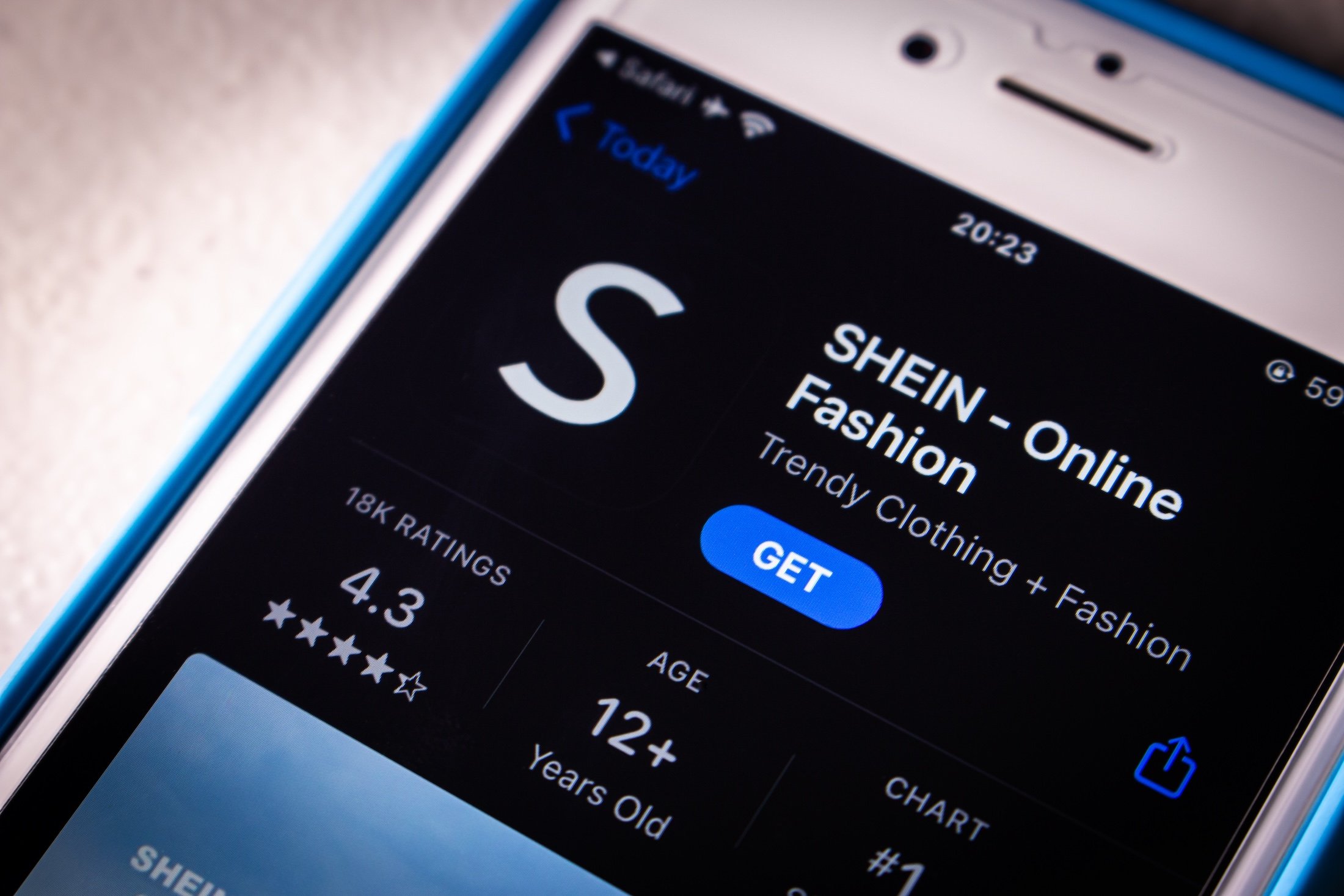Fast Fashion: What It is, How to Spot It & Why We Avoid It
Buying a new article of clothing used to involve visiting a seamstress, getting measured, choosing the materials, then waiting weeks for the piece to be made.
Fast-forward to today, and waiting any amount of time for a single garment seems preposterous. Advancements in supply chain technology have greatly increased the distance between people who manufacture clothes and those who wear them. We also live in a society that expects instant access to whatever we want, whether it’s our groceries, the latest iPhone, or a new outfit.
This combination is responsible for the rise of fast fashion, which has had a transformative impact on the way we value, buy, and discard our clothes.
- find 30+ fast fashion brands we AVOID here -
What is Fast Fashion?
Fast fashion refers to brands that produce high volumes of clothing throughout the year. Instead of launching new styles twice a year in the traditional spring/summer and winter/fall seasons, fast fashion companies have 52 micro-seasons. This gives consumers ongoing access to new, on-trend clothing at an affordable price.
Since we pay less money for our clothes, we also value them less. It’s normal to wear something only a handful of times before discarding it. We’re less attached to the clothes we buy because new clothes are cheaper than ever before, and we can buy them online with the click of a button.
There’s also more demand to keep our wardrobes fresh. Social media shows us what others are wearing, which amplifies the pressure to maintain a certain look. Appearing in the latest styles online boosts self-esteem and establishes a sense of belonging. If you can have brand new clothes at your fingertips each season, why wouldn’t you?
It turns out there’s a long list of reasons why it’s important not to support fast fashion. And, the low price we pay for these clothes comes at the expense of other people, the environment, and the irreplaceable future of our planet.
Why We Avoid Fast Fashion
Human Rights Violations
Fast fashion garments may be affordable for the end buyer, but those who make them pay a high price.
Garment workers in countries like Vietnam, Bangladesh, Cambodia, China, and India face long hours with little pay (the minimum wage for Bangladeshi workers was $68/month in 2013, but clothing factories often pay less).
In 2013, workers at Bangladesh’s Rana Plaza—a garment factory producing clothes for brands like Walmart, JCPenney, and Primark—were forced to work in unsafe conditions even after a government worker ordered it closed. The building collapsed, killing 1,100 workers and injuring 2,500.
Fast fashion also perpetuates child labor, gender-based violence, forced labor, and toxin exposure among the over 60 million garment workers worldwide, many of them women.
Resource Usage and Pollution
Producing materials for fast fashion is a resource-intensive practice. Cotton, for example, requires high amounts of water to grow. When farmed in countries like India, which are already facing freshwater shortages, it amplifies inequities in drinking water access. Currently, the fashion industry uses 79 billion cubic meters of water annually, a number that’s set to increase 50 percent over the next decade.
The fast fashion industry also pollutes the world’s water supply. The production of cotton is especially damaging because it uses fertilizers that run off into nearby streams and lakes, threatening wildlife—not to mention the release of toxic substances like mercury and arsenic which impact human and environmental health.
Land use is another negative side effect of fast fashion. The increasing demand on forests and grasslands for fast fashion not only threatens biodiversity; it reduces the amount of space available for growing sustainable crops for a growing population of people whose hunger needs aren’t being met.
Waste Production
It’s hard to pinpoint just how much waste the fashion industry produces, but research has estimated that Americans send about 21 billion pounds of post-consumer textiles to the landfill annually, with just 20 percent being reused or recycled. Researchers predict the amount of waste will reach 148 million tons annually by 2030.
Fast fashion garments also contain pesticides (thanks to conventionally-grown cotton) and are often treated with toxic chemicals like flame retardants, heavy metals, formaldehyde, and ammonia. These chemicals are added to boost clothing appearance and performance—like reducing wrinkles.
So what happens to clothes that sit in landfills? Instead of breaking down, they leach chemicals into the ground, air, and water. Clothing that isn’t sold within the rapid production cycle, or which can’t be recycled or dumped, is incinerated.
How to Spot Fast Fashion
Fast fashion’s damage on people and the planet presents a sobering reality. However, increasing interest in both transparent supply chains and ethical consumerism has elevated the demand for more sustainable fashion. A 2020 report shows that nearly half of 18-24 year olds were very supportive of sustainable fashion (compared to 30 percent of 35-44 year olds).
Brands are following suit, committing to ethical manufacturing, garment recycling programs, and sustainable, nontoxic textile production. While this is promising, some brands may make false claims in order to appeal to audiences. It’s hard to know when fashion brands are telling the truth about their sustainable and ethical practices (especially since there’s still a significant lack of transparency throughout the supply chain), and when it’s purely greenwashing.
Here’s a look at some of the most notorious fast fashion brands, even though some of them claim ethical practices.
Popular Fast Fashion Brands
H&M
H&M is one of the leading fast fashion brands facing scrutiny for its unethical labor and waste generation. Recently, the brand topped the Fashion Transparency Index, meaning they’re more honest about environmental and human rights practices than most brands.
Yet this rating doesn’t account for all their practices. For example, H&M launched in-store recycling bins, which are meant to provide a place where old clothes can be discarded ethically in exchange for a discount. These bins lead consumers to believe their old clothes will be turned into new garments, suggesting that H&M has changed its ways. However, research shows that just 35% of what’s put into these bins actually gets recycled, while the rest ends up in the landfill.
Plus, repurposing old clothes into new garments isn’t actually as easy as it sounds, especially when it’s cotton. So consumers may feel more inclined to buy new clothes from H&M under the condition they’ll be recycled when that isn’t actually the case.
Nike
Nike is a global leader in athletic clothing. Their association with major sports teams and well-known athletes makes them seem trustworthy, but their practices suggest otherwise.
One of the biggest problems with Nike is its labor practices. They’ve been accused of forced labor in China, and have also been linked to forced inmate labor in the United States. While they do provide some information on their supply chain, including which remediation processes they’ve implemented and their greenhouse gas production, whether or not they pay all workers a living wage hasn’t been addressed.
From an environmental perspective, Nike still uses conventional cotton grown with pesticides (they’ve made some progress with a small percentage of clothing made from organic cotton). They also use large amounts of leather in their shoe production, which is an industry associated with high amounts of toxins and pollutants, plus animal rights violations.
Urban Outfitters
Urban Outfitters makes trendy, young-adult-focused clothing that’s popular on college campuses.
Owned by the same parent company that produces clothes for Anthropologie and Free People, Urban Outfitters sells vintage-inspired clothes that appear to be repurposed, and the earthy, bohemian vibe presents the idea that their clothing is made in harmony with nature and made in small batches. They also sell clothing brands that are known to be sustainable, like Levi’s.
However, they’re actually a fast fashion brand convicted of numerous human rights and environmental violations. For one, they’ve been known to be quiet about their supply chain, and they haven’t shown evidence of minimizing waste or water consumption. Plus, they haven’t demonstrated that they pay their employees a living wage and have been known to ask their employees to work for free.
Another reason to avoid Urban Outfitters is they’ve used cotton from Uzbekestan (which is known to use forced child labor), despite making a pledge not to. Also, Urban Outfitters and partner brands like Anthropologie have come under fire both for selling designs that further cultural appropriation and copying designs from Indigenous-owned brands and artists.
Shein
Shein is an online retailer that’s gained popularity in recent years, mostly for its high volume of trendy styles available at extremely low prices.
Similar to sites like Romwe and Zaful, Shein isn’t doing much to communicate their environmental or human rights impact. They’ve always been tight-lipped about all aspects of their supply chain and worker policies. This lack of transparency is troubling because it suggests they have something to hide.
Shein is a fashion producer as well as a retailer of other brands. This makes it more possible they’re sourcing from companies that use harmful manufacturing processes. Since ethical, sustainable clothing production requires a greater investment, Shein’s low prices indicate their practices are neither.
Shein has also demonstrated harmful religious and cultural appropriation with its designs, selling items like Islamic prayer rugs, swastika necklaces, and other clothing that misrepresents cultural identities and practices.
Zara
Zara is a Spain-based clothing brand that sells European-inspired fashion in the United States and around the world. Zara is known as the brand that launched fast fashion on the global stage, and when they appeared in New York in the ‘90s, they touted their ability to take a product from concept to manufacturing to store in just two weeks.
Zara has tried to take responsibility for their influence on fast fashion, and similar to H&M, they’ve created a clothing recycling program called Close The Loop, which has in-store drop-off options. Yet, it’s unclear what happens to these clothes after they’ve been dropped in the bin, and there’s also no insight into how Zara manages or minimizes textile waste during the production process.
They’ve also taken steps toward increasing transparency around their supply chain. However, they’ve been shown to use forced labor and subject workers to unsafe and discriminatory environments.









